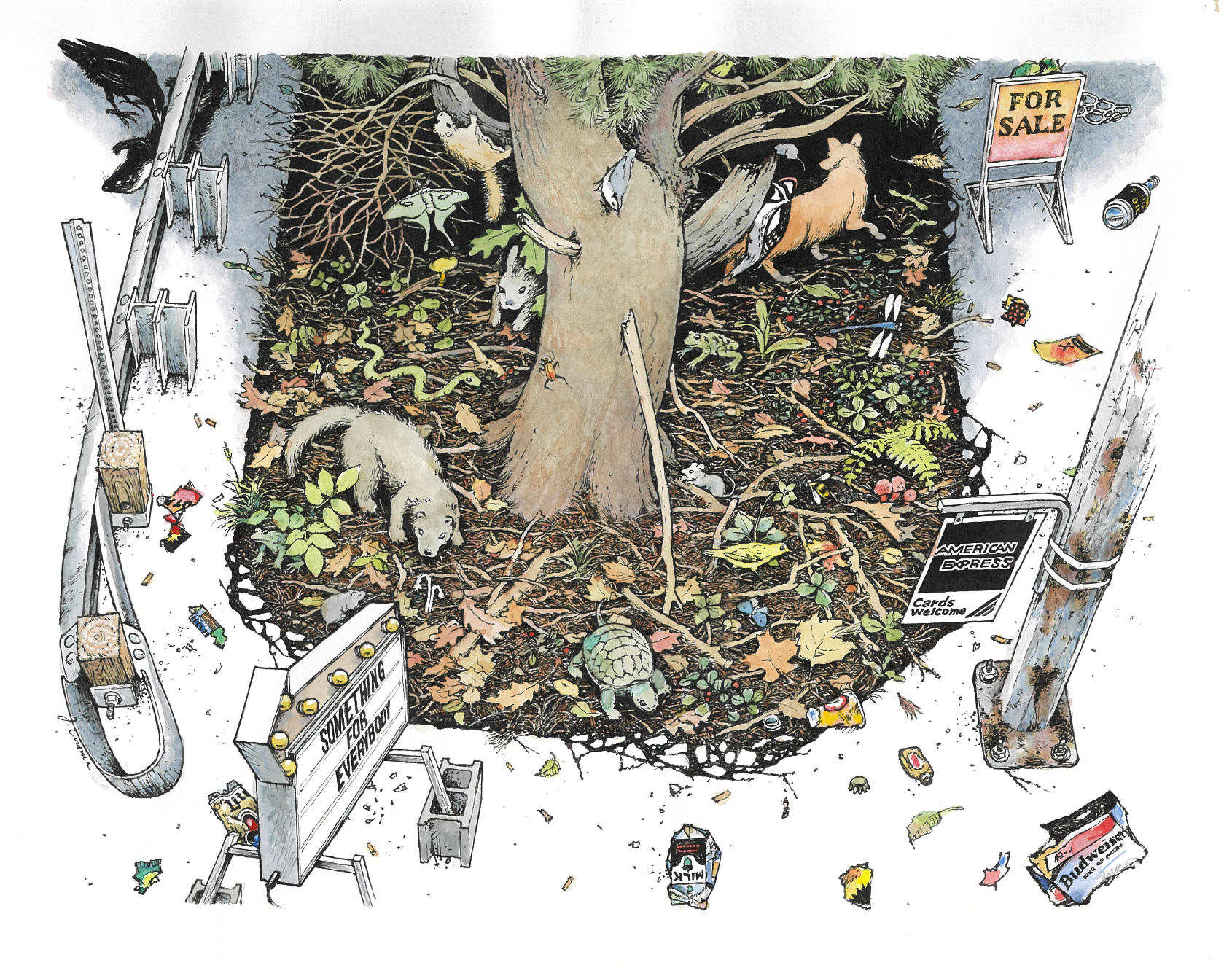A Focus on Wildlife Conservation and Biodiversity
Since its 2005 origin, Wildlands and Woodlands (W&W; now Wildlands, Woodlands, Farmlands & Communities, or WWF&C) seldom focused in detail on the conservation of biodiversity overall, or of particular wildlife species, for many good reasons. Though important areas of conservation, neither was a strength of our group, which centered on forest, landscape, and historical ecology, and both were already championed by many collaborating organizations and agencies. Our attention was centered on weaving the region together and supporting broad-scale ecological processes and structures that were absent from our region, including expansive wildlands dominated by old forests where natural processes could be expressed without the constraints of human intervention.
Of course, through these years, we were aware that the organisms that inhabit our landscapes, as well as many that were missing due to human activity, contribute critically to ecological patterns and processes. Consequently, as W&W has evolved quite naturally into WWF&C, our integrated vision has come to fully embrace the inherent value of all species. With that recognition, we have become determined to elevate the themes of wildlife conservation and biodiversity, to add individuals and groups with that expertise to our initiative, and to elicit thoughtful explorations in these areas concerning policy, stewardship, and appreciation.
In this issue we begin that effort with several contributions. The thoughtful and provocative essay by Walter Medwid calls for an overhaul of state wildlife governance. Conrad Vispo offers a delightful exploration of the reciprocal biodiversity benefits that nature may provide to farms and ecologically managed farmlands. Doug Tallamy describes a biodiversity crisis of unprecedented magnitude and calls upon all of us to help solve it. And Heather Furman of The Nature Conservancy offers hope in the prospect of restoration of our terrestrial and aquatic systems.
Looking forward, we welcome and will solicit contributions on related subjects. A few topics that are central in our thinking include: assessing state commitments to biodiversity, a topic elevated by the recent gubernatorial initiative in Massachusetts; the role and strength of our region’s Natural Heritage programs; the role of biodiversity in rewilding; and the arguments for bringing apex predators such as wolves and cougar back to our region and controlling native ungulate populations. We look forward to your comments and suggestions on our published pieces and ideas for future offerings.
“But when I consider that the nobler animals have been exterminated here, the cougar, panther, lynx, wolverine, wolf, bear, moose, deer, the beaver, the turkey, etc., etc., I cannot but feel as if I lived in a tamed, and, as it were, emasculated country. Would not the motions of those larger and wilder animals have been more significant still?”
Courtesy David Foster
As suggested by Thoreau’s journal entry, the status of animals—and all forms of biodiversity—in New England has been highly dynamic over time. While this is true in a broad sense since deglaciation, this graph, adapted from a 2002 paper on the subject, indicates the wild fluctuations that have occurred due to human depredation and major changes in the balance of forest, farmland, and developed land following colonization. Importantly, there has been no single period of stability in the past 400 years. Currently, following a century of reforestation and declining farmland, many native woodland species are resurging, and those species that favor culturally generated openlands and early successional habitats are declining dramatically. Meanwhile, a few species—the large predators—remain extirpated from the region, and some, such as the passenger pigeon, have been driven completely extinct. While this graph is restricted to a handful of species for which there are reasonable data, it is reasonable to expect that similarly major changes have occurred in many groups of species. Consequently, when we seek to develop an informed basis for conservation or restoration management, we must evaluate the historical context of species and their habitats.
David Foster is an ecologist, Director Emeritus of the Harvard Forest, and President Emeritus of the Highstead Foundation. He co-founded the Wildlands and Woodlands Initiative in 2005 and was lead writer of Wildlands in New England: Past, Present, and Future in 2023. David has written and edited books including Thoreau’s Country: Journey Through a Transformed Landscape; Forests in Time: The Environmental Consequences of 1,000 Years of Change in New England; Hemlock: A Forest Giant on the Edge; and A Meeting of Land and Sea: The Nature and Future of Martha’s Vineyard.


